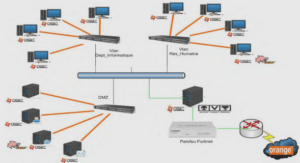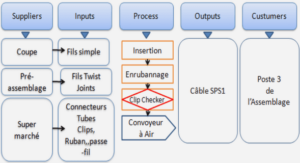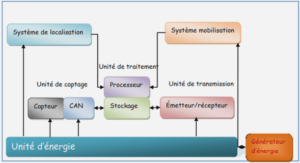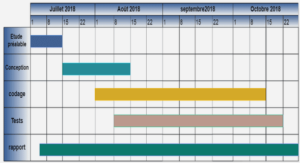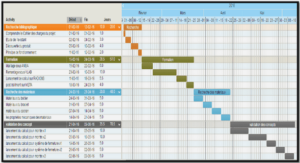LES PRINCIPAUX PARAMÈTRES AFFECTANT L’ACCRETION DE GLACE
UNE APPROCHE CFX MULTIPHASE POUR LA MODELISATION DE Lf ACCRETION DE GLACE SUR UN CYLINDRE
RÉSUMÉ DU PREMIER ARTICLE
La conception des éoliennes doit tenir compte de leur résistance aux conditions extrêmes comme l’accumulation de glace. Le givrage est un problème complexe où plusieurs études doivent être menées pour proposer un modèle précis de simulation de ce phénomène sur les pales d’éoliennes afin de prédire les pertes de puissance dues à la déformation du profil aérodynamique des pales.
Le développement d’un code pour la solution numérique des équations de Navier-Stokes est compliqué et c’est pourquoi nous avons utilisé des logiciels commerciaux avec des modèles mathématiques prêts à utiliser pour les calculs des écoulements. Les modèles tridimensionnels les plus avancés comme ceux utilisés dans Fluent ou CFX utilisent la théorie des éléments finis ou des volumes finis pour résoudre les équations de Navier- Stokes. Ce projet présente le modèle numérique de l’écoulement et les calculs de l’efficacité de collection locale de l’accrétion de glace autour d’un cylindre fixe en utilisant les modèles numériques d’ANSYS-CFX.
Cette étude s’inscrit dans une étude plus large menée au Laboratoire de Recherche en Énergie Éolienne (LREE) sur le givrage des éoliennes. Nous avons donc appliqué une approche Eulérienne, basée sur les outils de modélisation multiphasique (eau dans l’air) d’ANSYS-CFX pour simuler Taccrétion de glace sur un cylindre. Ces simulations ont été validées avec des résultats numériques et expérimentaux pour pouvoir passer à une étape ultérieure. L’étude fondamentale de l’accrétion de glace sur un cylindre est la première étape à faire pour plusieurs domaines de recherche sur le givrage en raison de la relative simplicité géométrique du cylindre et de la disponibilité de résultats pour les validations.
Ce premier article, intitulé «A multiphase CFX based approach into ice accretion modeling on a cylinder», fut élaboré par moi-même ainsi que par le professeur Adrian Ilinca, mon collègue, Drishty Ramdenee et Hussein Ibrahim, directeur de recherche au TechnoCentre Éolien et professeur associé à PUQAR. Il fut accepté pour publication dans sa version finale en 2011 dans la librairie numérique «IEEE eXplore» de LEEE. En tant que premier auteur, ma contribution à ce travail fut l’essentiel des recherches bibliographiques, le développement de la méthode, la modélisation, la simulation, et la rédaction de l’article.
Le professeur Adrian Ilinca a fourni l’idée originale. Il a contribué au développement de la méthode ainsi qu’à la révision de l’article. Drishty Ramdenee a contribué aux simulations numériques ainsi qu’à la rédaction de l’article. Hussein Ibrahim a contribué à l’état de l’art
du givrage ainsi qu’à la révision de l’article. Cet article a été présentée à la conférence « 2011 IEEE Electrical Power and Energy Conference» qui a eu lieu à Winnipeg, Manitoba, (Canada) du 3 au 5 octobre 2011.
A multiphase CFX based approach into ice accretion modeling on a cylinder
Fahed Martini, Drishty Ramdenee, Hussein Ibrahim, Adrian Ilinca
Abstract
As conventional fuel price has been on a roller coaster ride to a zenith for the past decade, renewable energies, mostly wind energy, have known a constant growth. Wind energy has escalated from an annual production of about 5000 MW in 1995 to approximately 90 000 MW production in 2005 [5]. This trend has been fuelled by improvement in the design of turbines and their resistance to extreme conditions like ice accretion. This phenomenon triggers the degradation of turbine performance and increases vibration problems. In an aim to mitigate this problem, it is important to predict the shape, type and extent of ice accretion in order to apply optimised de-icing strategies. However, ice accretion is a very complex and several upstream studies need to be conducted to propose a precise model to simulate this phenomenon. This article proposes one such upstream study inscribed in a more global study being conducted at the Wind Energy Research Laboratory on ice accretion – CFX based modelling of water droplets flow in an airstream until impingement on a cylinder. This model makes part and parcel of a more elaborate project whereby thermodynamics and phase change equations will be applied on each water droplet to simulate the new geometry due to ice accretion. The water droplets /airstream flow is then iteratively simulated on the modified geometry to model the transient ice accretion phenomenon.
This article emphasis on the intrinsic parameters in multiphase modelling, the factors affecting local and global water droplets collection, models simplifications, the analytical equations used in the model, the obtained results and the options for further improvement of the model.
INTRODUCTION
Apart from increasing the swept area via a trend to gigantism, power production can be peaked in regions of higher air density and higher average wind regimes. Such conditions are usually available in Nordic regions. Paradoxically, wind turbines are subjected to ice accretion in these regions. Ice accretion is dire to the structure and triggers vibration and a resulting decline in power output. In order to mitigate these baneful effects, de-icing and ice mitigation procedures are used. However, these techniques are energy-costly. For optimised results while moderating energy use to apply de-icing techniques, it is important to be able to predict the shape, size, type and position of ice accretion on wind blades. In order to achieve this prediction,complex tools that can 1) model the air-water stream flow, 2) define impingement regions, 3) calculate water droplet collection efficiency on the blade or airfoil, 4) apply thermodynamics equations on the water droplets to simulate phase change and resulting icing or surface runoff and 5) estimate blade or airfoil geometry deformation. Iterative mesh change with geometry change and continuous ice accretion modelling should be performed. The creation of such a tool is very complex and requires completion of numerous sub steps. At the WERL, numerous studies are being conducted on ice accretion modelling and one of the preliminary steps is to implement a module capable of modelling water droplets in an airstream according to different velocities,liquid water concentration, etc and simulate the impingement zone and accumulation on a downstream body. This model will be used further as a module for flow and water accumulation to model ice accretion.
|
Table des matières
REMERCIEMENTS
AVANT-PROPOS
RÉSUMÉ
ABSTRACT
TABLE DES MATIÈRES
LISTE DES FIGURES
LISTE DES ABRÉVIATIONS, DES SIGLES ET DES ACRONYMES
CHAPITRE 1 INTRODUCTION GÉNÉRALE
1.1 MISE EN SITUATION
1.2 PROBLÉMATIQUE
1.3 OBJECTIFS
1.4 METHODOLOGIE
1.5 L’ETAT DE L’ART DU GIVRAGE
1.5.1 LES PRINCIPAUX PARAMÈTRES AFFECTANT L’ACCRETION DE GLACE
1.5.2 L’EFFICACITE DE LA COLLECTION
1.5.3 LES REGIMES DE L’ACCUMULATION DE GLACE
1.5.4 LES MODÈLES NUMÉRIQUES DE L’ACCRETION DE GLACE.
1.6 SIMULATIONS NUMÉRIQUES DE L’ÉCOULEMENT D’AIR ET L’ACCUMULATION DE GLACE AUTOUR D’UN CYLINDRE
1.6.1 L’APPROCHE EULERIENNES AVEC C FX POUR L’ESTIMATION DE L’EFFICACITE DE COLLECTION
1.6.2 CALCUL DES TRAJECTOIRES DES GOUTTELETTES D’EAU AVEC UNE APPROCHE
LAGRANGIENNE
CHAPITRE 2 UNE APPROCHE CFX MULTIPHASE POUR LA MODELISATION DE L’ACCRETION DE GLACE SUR UN CYLINDRE
2.1 RESUME DU PREMIER ARTICLE
CHAPITRE 3 UNE INTERFACE INTERACTIVE LAGRANGIENNE POURMODELISER L’ACCRETION DE GLACE SUR UN CYLINDRE – CAS DE TEST POUR LA MODELISATION DU GIVRAGE SUR DES PROFILS D’EOLIENNES
3.1 RESUME DU DEUXIÈME ARTICLE
CHAPITRE 4 CONCLUSION GÉNÉRALE
4.1 BILAN ET AVANCEMENT DES CONNAISSANCES
4.2 LIMITATIONS DE LA RECHERCHE
4.3 TRAVAUX FUTURS
RÉFÉRENCES BIBLIOGRAPHIQUES
![]() Télécharger le rapport complet
Télécharger le rapport complet

